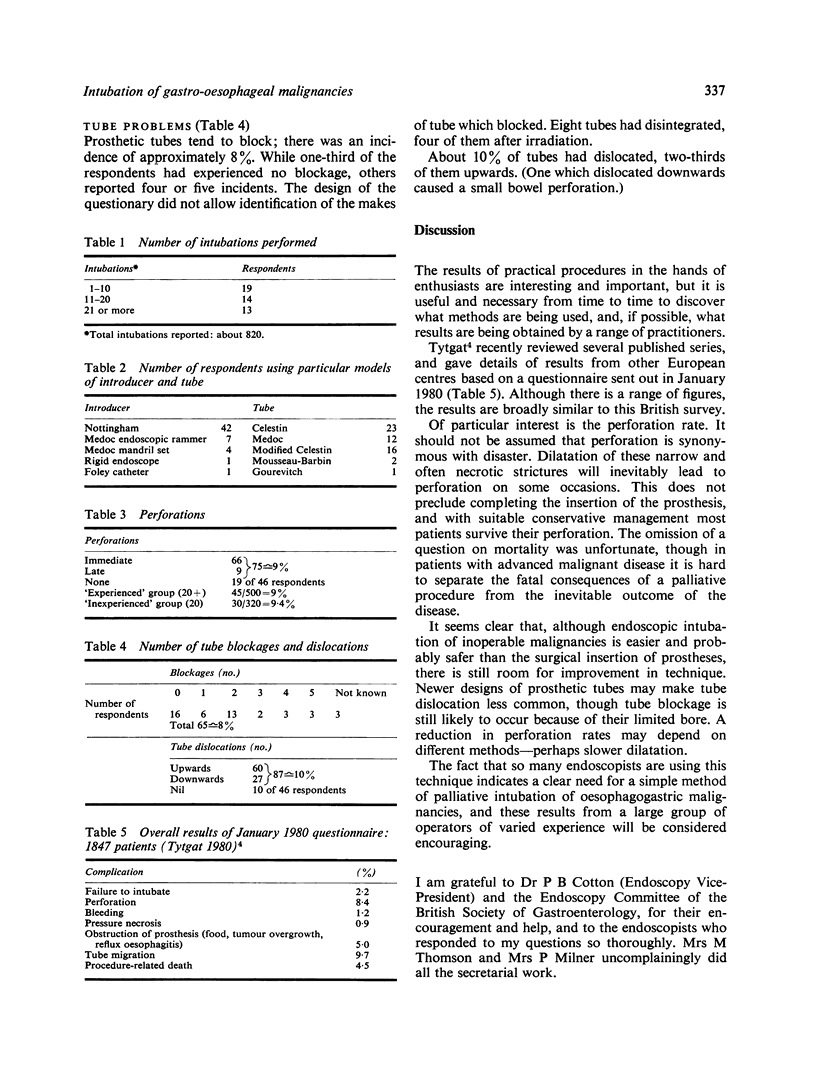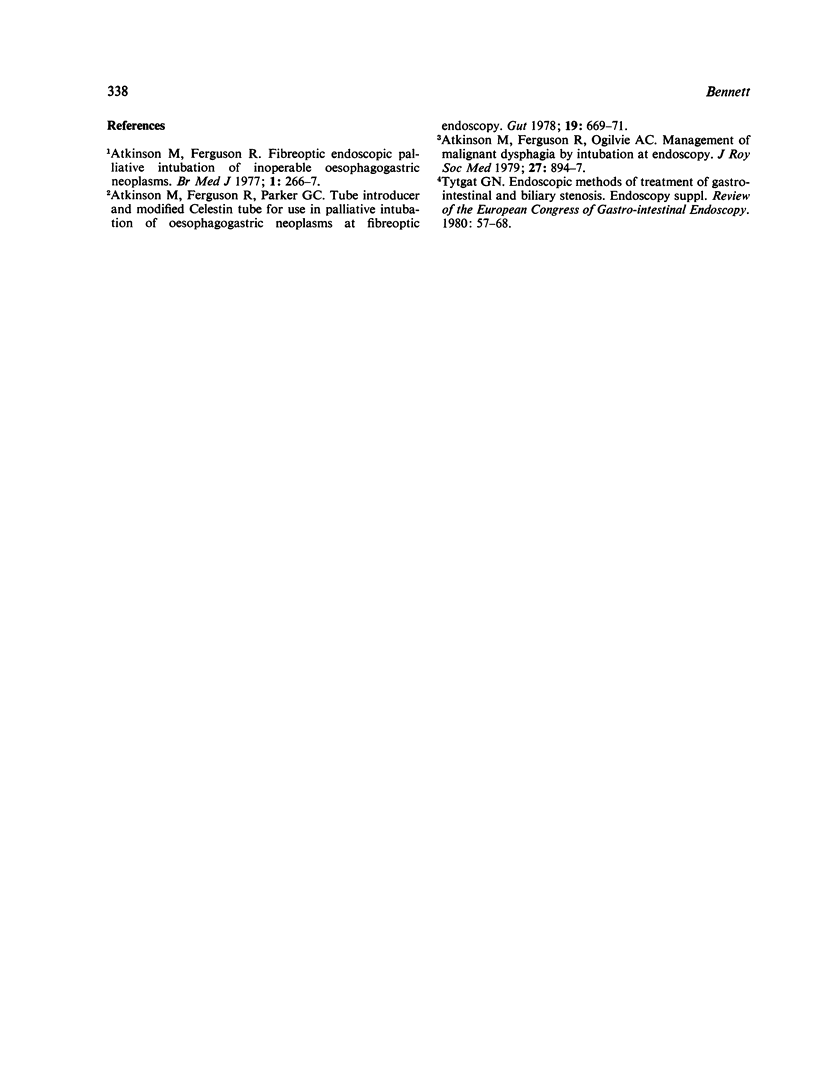Abstract
A postal survey of British endoscopists was carried out to discover current practice in the intubation of gastro-oesophageal malignancies. Forty-six replies were analysed, comprising about 820 intubations. There were 75 perforations (approximately 9%) and the rate was about the same for operators with experience of 20 or more intubations. Tube blockage and dislocation were the main other problems.
Full text
PDF


Selected References
These references are in PubMed. This may not be the complete list of references from this article.
- Atkinson M., Ferguson R. Fibreoptic endoscopic palliative intubation of inoperable oesophagogastric neoplasms. Br Med J. 1977 Jan 29;1(6056):266–267. doi: 10.1136/bmj.1.6056.266. [DOI] [PMC free article] [PubMed] [Google Scholar]
- Atkinson M., Ferguson R., Ogilvie A. L. Management of malignant dysphagia by intubation at endoscopy. J R Soc Med. 1979 Dec;72(12):894–897. doi: 10.1177/014107687907201206. [DOI] [PMC free article] [PubMed] [Google Scholar]
- Atkinson M., Ferguson R., Parker G. C. Tube introducer and modified Celestin tube for use in palliative intubation of oesophagogastric neoplasms at fibreoptic endoscopy. Gut. 1978 Jul;19(7):669–671. doi: 10.1136/gut.19.7.669. [DOI] [PMC free article] [PubMed] [Google Scholar]
- Tytgat G. N. Endoscopic methods of treatment of gastrointestinal and biliary stenoses. Endoscopy. 1980;(Suppl):57–68. [PubMed] [Google Scholar]


